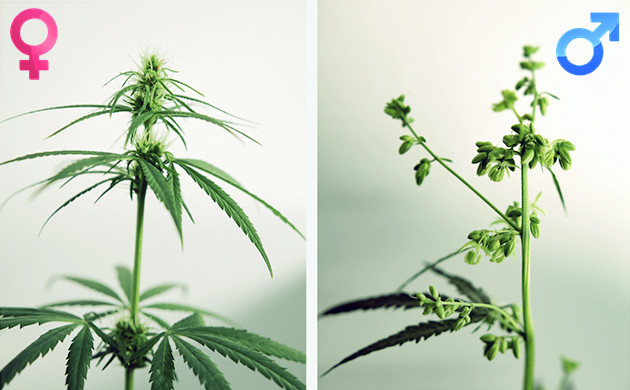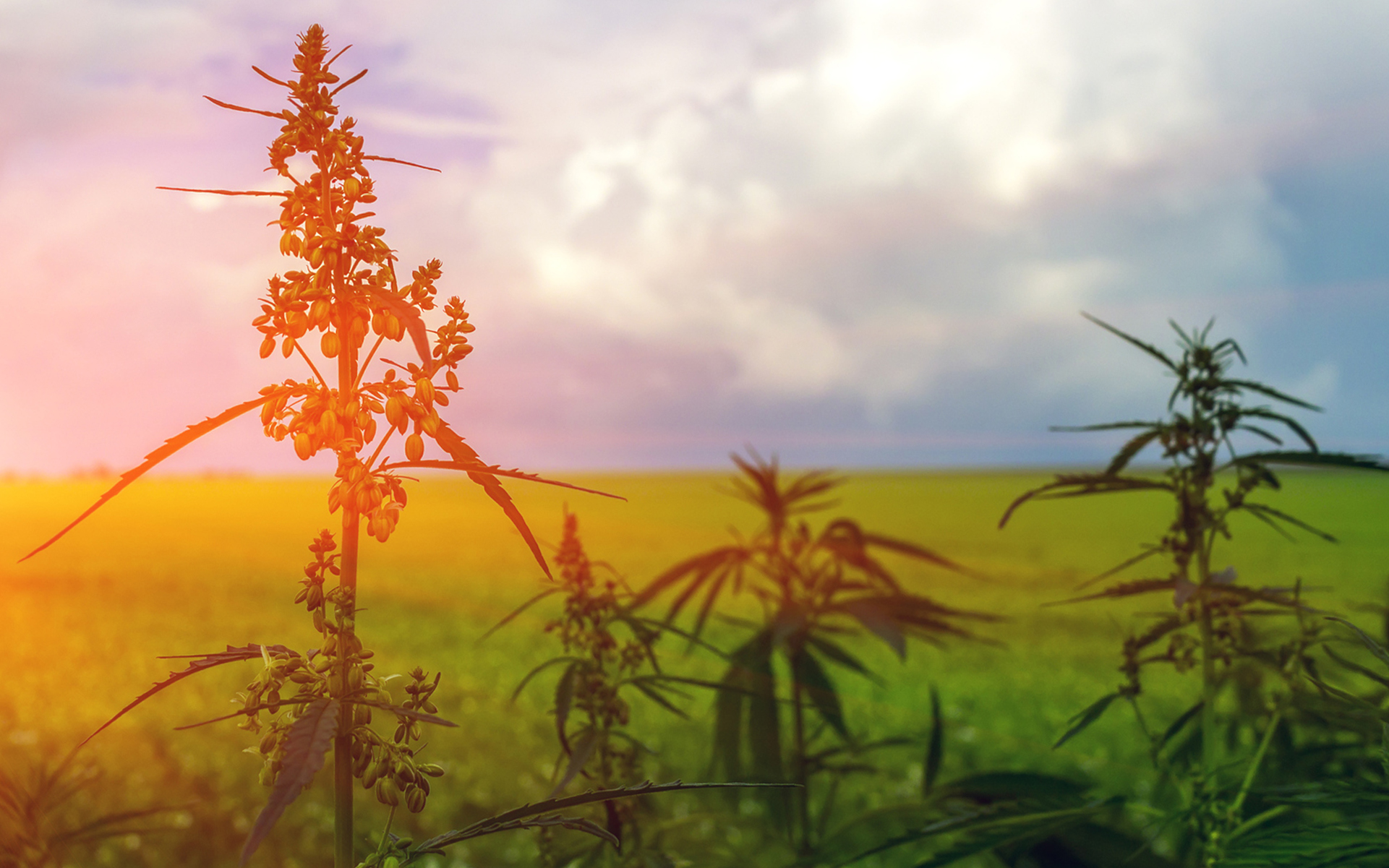If you are growing marijuana for medicinal purposes, you need to know how to identify female and male marijuana plants. Almost all growers prefer female marijuana plants because only females produce the coveted buds needed for medicinal purposes. Male plants have low potency and THC content compared to the female plants, and they are kept to mostly produce seeds.
How to distinguish males from females in cannabis growing
Marijuana (cannabis sativa sp.) is a dioecious or unisexual plant, what means that it produces male and female flowers in different individuals, although we can find both types of flowers in hermaphrodite plants. We call males those plants that produce male flowers, and females those producing female flowers.
Marijuana males flower producing small bell-shaped clusters, that hang down and open releasing the pollen, while females produce tear-shaped calyxes with two pistils – usually white – that group together forming what we call buds.
When to determine the sex of marijuana plants?

Generally, cannabis plants start flowering when nights – dark periods – are longer, which is a sign to show their sex and start blooming. Actually, marijuana plants reach their sexual maturity between 6-8 weeks after seed germination , regardless of the photoperiod.
It is this fact what can help us to determine the sex of our marijuana plants without the need to make cuttings or change the photoperiod, what could strees our young plants.
As we mentioned before, when plants are about 2 months old – when they have 5 or 6 internodes – they are sexually mature, which is to say, they have set their sex. In some cases – most of them produced by stress – plants will show both sexes, being what we call hermaphrodites, but generally at this moment plants show their true sex, that will mantain for their entire life cycle.
This technique of premature detection of the sex needs a little practice, but once mastered it will allow us to determine the sex of our cannabis plants at a very early stage.
Sexing marijuana from cuttings
If we can’t sex our plants with this technique, we can take a cutting from each of our marijuana plants and flower it in a growing tent – 12 hours of light/darkness photoperiod – what will force it to flower and show its sex, that will be exactly the same as its mother plant.
What we don’t recommend at all is forcing the flowernig of mother plants for a few days/weeks and once they show their sex placing them again with a growing photoperiod (18 hours of light/6 hours of darkness), since this will produce major hormonal changes inside the plants, being an easy way to stress them – what will improve the chances to get hermaphrodite plants.
Why do growers desire female plants?
Sex matters when it comes to cannabis. Female cannabis plants are prized because they grow cannabinoid-rich buds. Male cannabis plants, in contrast, have less THC content than females. Though some growers do choose to keep male plants for breeding purposes in order to introduce greater genetic diversity into their crops.
Maintaining a crop of exclusively female plants prevents the possibility of male plants fertilizing female plants, leading to seed production. Fertilized female plants don’t create as much cannabinoid content as unfertilized females. When a female bud is fertilized, the plant’s energy and nutrients are directed to creating seeds, rather than forming THC-rich buds. Seedless female buds are known as sinsemilla and are celebrated for their longer bud-producing life and higher THC levels.
If you’re growing cannabis from feminized seeds, or seeds that have been cultivated to produce only female plants, the plants should grow to be exclusively female. With non-feminized or regular seeds, approximately half the plants will turn out to be male.
Do male plants produce buds?

Male plants don’t produce buds. The male sex organs of the cannabis plant instead produce pollen sacs that are designed to fertilize the female bud and form seeds. Seedy female buds are undesirable as they provide lower-quality cannabis. It’s essential to remove the male and hermaphroditic plants from a crop as soon as possible to protect the quality of the female buds.
How can you tell if a plant is a female before it flowers?
In the pre-flowering phase, the main giveaway of a female plant is the appearance of fine, white hairs known as stigmas protruding from tiny tear-drop shaped buds. Stigmas form part of the pistil, or the female reproductive organs, that are located at the nodes where the branches meet the central stalk.
The wispy, white hairs of the female stigma become visible approximately four to six weeks after germination and progressively darken over time. Pistils and stigmas are more likely to appear closer to the top of the plant near the light source, but they can also form in the lower regions.
How can you tell if a plant is a male?
Like the female plant, the male cannabis plant also has sex organs. Male plants often, but not always, reveal their sex a week or two before female plants. Male plants produce pollen sacs, which also grow at the junction between the node and the stalk. When they first form, the male pollen sacs can initially look similar to the tiny buds that appear on female plants, but they do not have stigmas protruding from them. The male pre-flowers also take on more of a spade-like shape than the tear-drop shape of the young female bud.
There are other morphological differences that distinguish males from females. The male plant frequently grows taller than its female counterpart and has thicker, sturdier stalks to support its weight. Male plants also have fewer leaves than female plants, which tend to be shorter and bushier.
How can you tell if a plant is a hermaphrodite?
Hermaphrodite plants, or “hermies” as they are sometimes known, grow both male and female sex organs. Some cannabis cultivars such as Thai Sativa are true hermaphrodites with the tendency to express hermaphroditism in their genes. However, hermaphrodite plants generally occur as an outcome of stress, such as photoperiod disruptions, nutrient deficiencies, or disease. It’s vital to check female plants carefully to ensure the buds are female, and there are no male flowers that could result in the plant fertilizing itself.
Two signs indicate a plant is hermaphroditic. The first and most obvious sign is if the plant grows both male pollen sacs and female buds. The second sign is the appearance of anthers, known colloquially by growers as bananas or “nanners.” Anthers have a curved shape, are typically yellow or lime-green, and appear among buds. Unlike regular male pollen sacs, these anthers can fertilize the female plants as soon as they emerge, so they must be immediately trimmed or removed to protect a female crop.